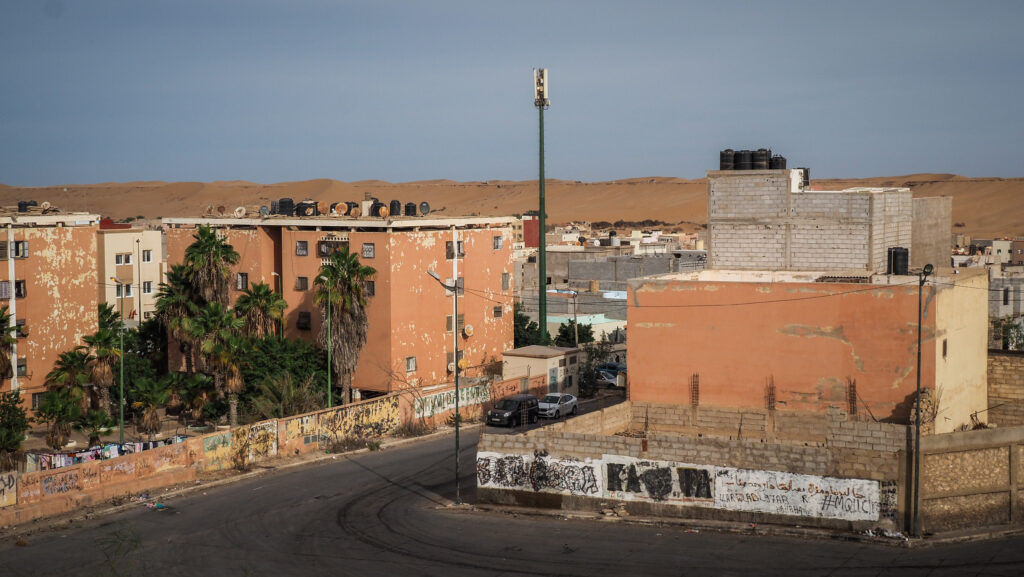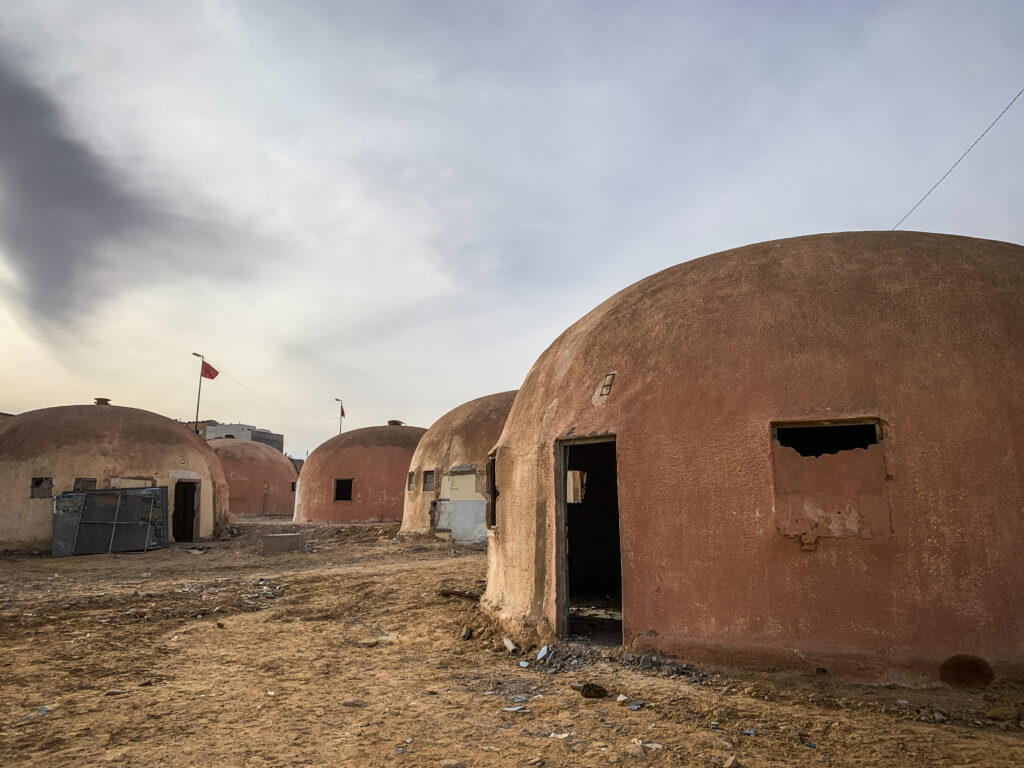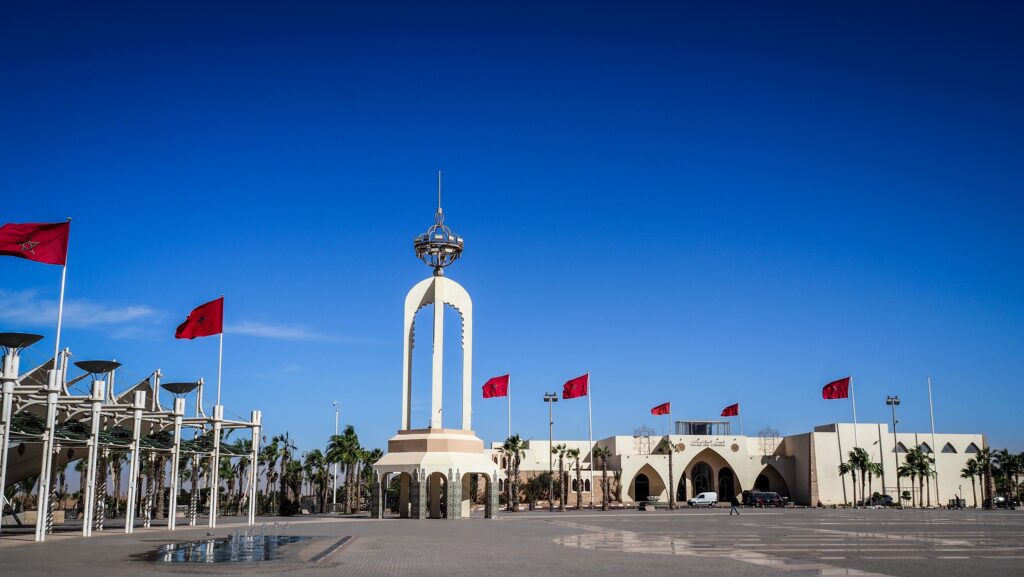Laayoune, located in Western Sahara, has a complex history, deeply intertwined with the broader historical and political context of the region.
Before European colonization, the region of Western Sahara was inhabited by indigenous peoples, primarily nomadic tribes such as the Sahrawis. These tribes lived a traditional lifestyle based on herding and trade.
In the late 19th and early 20th centuries, European powers, particularly Spain and France, began colonizing parts of North Africa. Spain established control over what is now Western Sahara, including the area where Laayoune is located. They called the territory Spanish Sahara or Rio de Oro and Laayoune became the administrative capital.
As decolonization movements swept across Africa in the mid-20th century, calls for independence grew in the Spanish Sahara. The indigenous Sahrawi people, led by the Polisario Front, sought self-determination and independence from Spanish colonial rule.

As Spain prepared to decolonize the region in the 1970s, both Morocco and Mauritania asserted historical claims to Western Sahara. This led to a complex conflict, with the Polisario Front fighting against both Moroccan and Mauritanian forces.
After Spain withdrew from Western Sahara in 1976, both Morocco and Mauritania moved to annexe parts of the territory. Morocco claimed the northern two-thirds of Western Sahara, including Laayoune, leading to armed conflict with the Polisario Front.
The status of Western Sahara remains unresolved to this day. Morocco controls most of the territory, including Laayoune, while the Polisario Front operates in the eastern part of the region, advocating for independence. The United Nations has been involved in efforts to find a peaceful resolution to the conflict, including a proposed referendum on self-determination for the Sahrawi people, however, I doubt it will take place in any foreseeable future.
Tourism infrastructure in Laayoune isn’t as developed as in other Moroccan cities, but for me it’s an advantage which makes the city worth visiting. Furthermore, you won’t find any other bigger settlements en route to Dakhla, so it’s a good base to refill your supplies and treat yourself in better restaurants.
Keep an eye on the political situation in Western Sahara and any travel advisories issued by your government. I visited Laayoune in November 2023 and it was perfectly safe, although I could notice a lot of military and United Nations vehicles all around the city.
How to get there?
To get to Laayoune in Western Sahara, you typically have a few options:
By Air: You can fly to Hassan I Airport (Laayoune Airport) with Royal Air Maroc from major cities, such as Casablanca, Marrakech, or Agadir.
By Road: The roads are generally well-maintained, but it’s a long journey, so be prepared for a drive of several hours or more depending on your starting point. If you are looking for a rental car in Agadir, I recommend using the service of Click’n’Go Car Rental. They are very friendly guys and easy to contact on WhatsApp. I ended up renting a Renault Clio for the whole month and got a nice price.
By Bus: Supratours and CTM are two popular bus companies operating in Morocco.
You may also check your connections at 12go.com.

The best time to visit
The best time to visit Laayoune is during the spring (March to May) and fall (September to November) when the weather is mild and pleasant. Summer can be quite hot, while winter brings cooler but enjoyable temperatures. Choosing spring or fall ensures a comfortable climate for enjoying nearby beaches and exploring the city and its surroundings.
Where to stay?
I can honestly recommend the Sahariano Hotel. It is very well located in the city centre of Laayoune, close to shops and restaurants and has very good internet. The communication with hotel personnel was smooth and they gave me some advice for further travel.
How long to stay there?
Even though it’s the biggest city in Western Sahara, it’s still quite compact so you won’t need more than a day to walk around it and see major sights.

What to see in town?
I started the day by checking out the Cathedral of Saint Francis of Assis. It was closed so I could just take a picture from the outside. I walked further down towards the bridge, passing by a hospital and plenty of military bases.
The views from the bridge were nice. City buildings on the left, dunes on the right and some flamingos in shallow water in the centre.
Then, I walked back towards the bus station. On the left, there are some abandoned old-style traditional Saharan houses. I passed between them and saw a football pitch full of kids, clearly very excited to see me there.

If you are into some adventure, you can hike down to the dry riverbed and then climb the top of the dune, visible from the distance.
I wasn’t so adventurous on that day and I turned back and walked towards the main square. It’s a large space with Palais des Congrès and plenty of Moroccan flags. Just in case you wondered what is the current status of Western Sahara…

I had lunch in the excellent Restaurant Gardenia, located just a 5-minute walk from the main square. You must try their avocado smoothie!
Then I walked back towards Sahariano Hotel and past the roundabout with McDonald’s. I reached Youssef Ibn Tashfin Mosque and then decided to call it a day and get ready for departure to Dakhla.
Laayoune is a nice stopover en route to Dakhla or Mauretania, although the presence of military personnel on every corner gave me some creepy feeling that I was in some danger zone.

